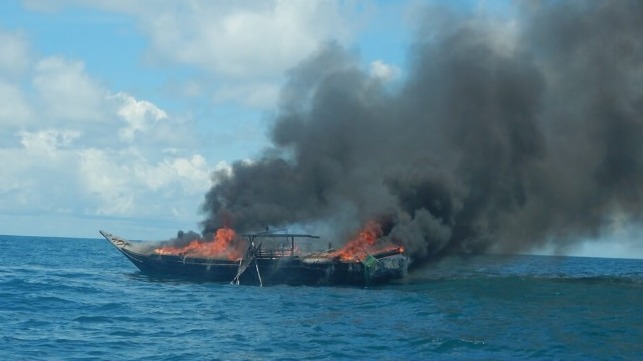Australia Seizes and Destroys Two More Indonesian Fishing Boats

The Australian Border Force has caught and destroyed another two foreign fishing vessels off the coast of Western Australia, the latest in a broad crackdown on Indonesian intrusions into protected waters of the Australian EEZ.
On April 3, a foreign fishing vessel was spotted near Cape Bougainville, Western Australia. It was suspected of illegal fishing, and was boarded and seized. The five fishermen aboard the boat were detained.
On April 15, another boat was spotted near Holothuria Banks, and was suspected of engaging in illegal fishing. Officers boarded it and detained the crew.
Between the two boats, ABF officers seized more than 400 kilos of cucumber, a common target for unlawful artisanal fishing activity. They also found 360 kilos of salt, used to preserve the illicit catch for the long journey back north, and fishing gear.
The boats were seized and "disposed of" at sea, as allowed by Australian law. In previous cases, ABF units have burned illegal fishing boats on the spot.
The 12 fishermen will be transferred to Darwin for further investigation and processing, and may face charges. Typical penalties include a suspended sentence and deportation, or brief prison stays and fines for repeat offenders.
The ABF has recently redoubled its enforcement efforts in the remote regions of Western Australia and the Northern Territory, where vast distances and sparse settlement make border control a challenging task. An uptick in Indonesian fishing boat activity, including at least one known instance of human smuggling, has given new impetus to the agency's efforts. It is also now working more closely with local indigenous patrols to find and identify intruding vessels.
